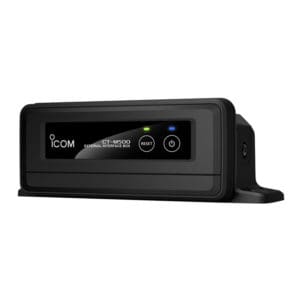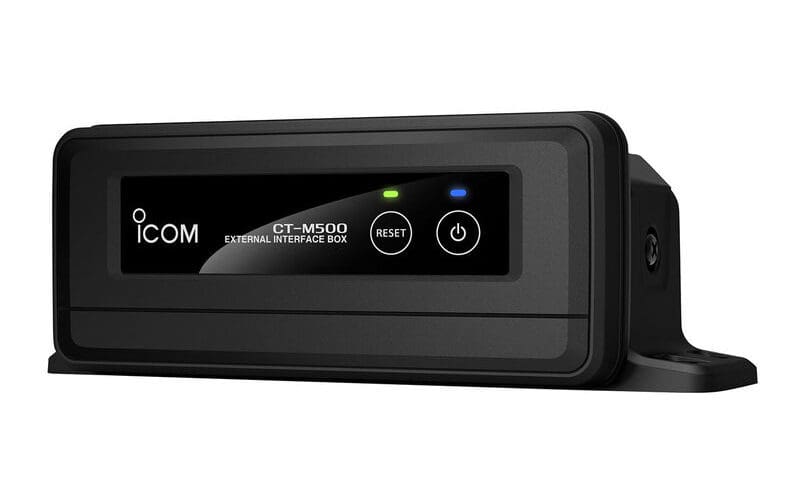
If you are the skipper of a large yacht, you are keenly aware of the need to have immediate communication capability with all crew and passengers at all times. The quickest, easiest way to make announcements to all onboard, particularly in the event of an emergency, is with a hailer, which is usually nothing more than a large, conical speaker mounted on the mast or other elevated surface.
Until recently, hailers have been connected to an intercom system via a long pair of wires, which can be run down inside the mast, through the coach roof and then tacked to surfaces along its circuitous path to the intercom microphone.
Now, with a wireless interface from either ICOM or IWCS Radio Interface, you can install a wireless interface connected to your VHF radio and the hailer mounted anywhere you desire aboard your vessel.
The ICOM CTM500-11 External Wireless Interface Box can be paired with the ICOM M510 VHF Marine Transceiver, which features wireless local area network function and integrated AIS. For ease of pairing and installation, the CTM500-11 interface and M510 VHF radio are commonly purchased together in order to enable making use of the hailer trouble-free.
With the ICOM Interface Box priced at roughly $200 and the M510 Transceiver at about $800, the total price of $1,000 sounds quite reasonable considering the added safety, ease of installation and push-button ease of operation afforded crew members.
The other major player in the wireless radio speaker arena is IWCS Radio Interface of Kvistgaard, Denmark. IWCS claims its External Radio Interface enables the audio integration of a hailer with “any commercially available radio,” including marine VHF, as long as it has external audio and push-to-talk (PTT) features. Although IWCS recommends using a radio from one of its partners — Motorola, Sepura, Garmin, ICOM, Entel or Sailor — the radio interface is not restricted to products from these manufacturers.
Key features of the IWCS Radio Interface include microprocessor-controlled PTT function via the company’s signature iriSound and iriSelect systems, direct PTT capability for simplicity of operation and a flexible, configurable radio interface. The interface also features a multi-color status LED to permit monitoring of the system.
Frankly, for a sailing vessel measuring less than 40 feet LOA, it may be a stretch to make a sound argument, if you will excuse the pun, for a hailer, whether it is hardwired to a microphone and amplifier or connected by wireless interface to a VHF radio. But on larger yachts, where crew are often assigned to specific areas of the vessel from bow to stern, the ability to reach all ears with a loud hailer can save lives.
Despite the obvious advantages of a wireless interface for a hailer, it is appears ICOM and IWCS are the only manufacturers currently offering this type of technology to the voyaging community. Pick the unit better suited to your crew’s needs and be the first in your marina to take advantage of this labor-saving addition to your vessel’s communications array.
Circumnavigator-author Bill Morris believes the best strategy for succeeding as an offshore voyager is to keep systems simple and, if possible, manual. Key to survival are a windvane self-steering system, a basic array of electronics and an aggressive alternative energy battery charging matrix. Bill is a contributing editor to Ocean Navigator and the author of The Windvane Self-Steering Handbook (International Marine, 2004) and The Captain’s Guide to Alternative Energy Afloat (Seaworthy Publications, 2019).

